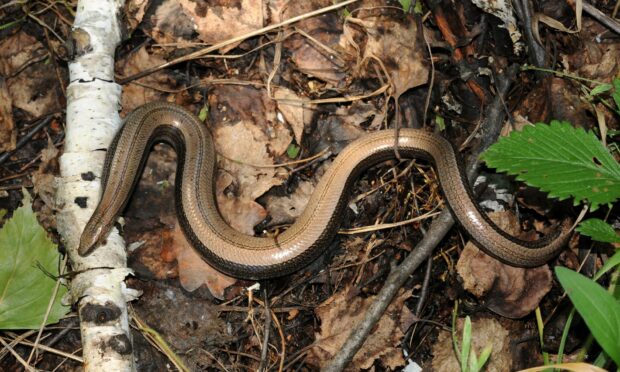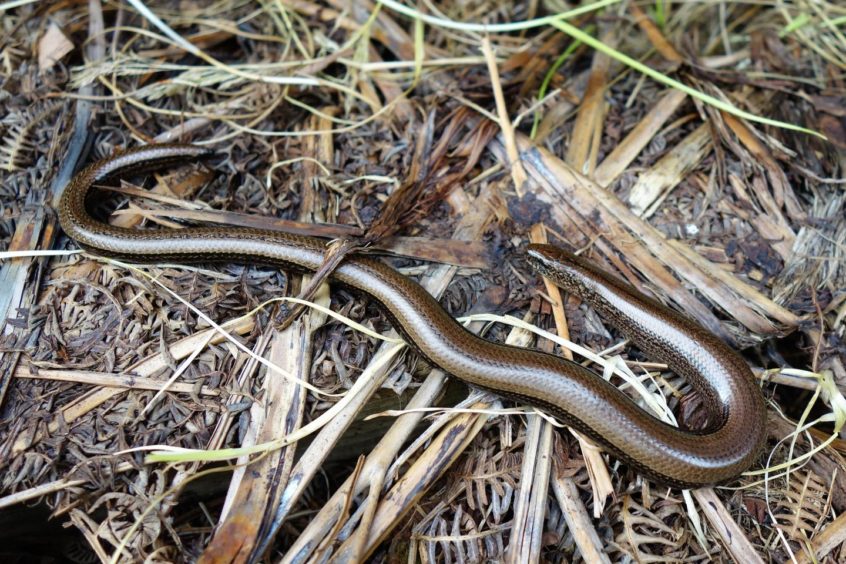If there is one thing guaranteed to set my pulse racing, it is stumbling upon a piece of discarded corrugated iron lying on the ground.
A bizarre thing to say, perhaps, given it is a form of pollution, but beneath its protective cover, I know from experience there is every chance some incredible creatures will be lurking beneath.
Thus, when exploring the bankside of a river near Lochinver in Assynt recently, a large sheet of corrugated iron lying adjacent to an old drystane dyke, shone-out at me like an irresistible invite.
With great anticipation, I gently lifted this sheet of iron to reveal a bronze glimmering on the ground beneath – slow worms!
There were two of them intertwined together. For a short moment they lay still, before quickly retreating into their narrow underground burrows on realisation that potential danger threatened.
It was a thrilling find, especially since slow worms are elusive animals.
Strange creatures
They are strange creatures – neither worm nor snake, but in fact a legless lizard. Unlike a snake, a slow worm has eyelids and blinks like a lizard.
The internal anatomy shows traces of times long past where legs were present and before evolution took its ultimate course.
If seized roughly, the slow worm will shed its tail in the same manner as a lizard.
Slow worms are most active after dusk when they leave their shelters and seek out slugs and other invertebrates to feast upon.
Confusingly, slow worms are also known as blind worms – I’m not sure why as their eyes are very apparent, but possibly it’s because they are often found under rocks and logs where it is perpetually dark.
What is undeniable is that their similarity to snakes has led to them having a stained reputation in historical times, as highlighted in Shakespeare’s Macbeth where the witches added ‘blind-worm’s sting’ to their noxious brew.
Slow worms are neither venomous nor do they sting, but often legend and myth unfairly tarnish a creature.
Fast-moving
Just as perplexing is the name because the slow worm is fast-moving when the inclination takes it – although certainly not as fast as snake.
The most likely derivation comes from an old English translation meaning ‘slow snake’. Whether such an explanation would satisfy the early 20th century naturalist Edward Step is another matter. In his book ‘Animal Life of the British Isles’ published in 1921, he was quite indignant about the nomenclature of the slow worm by stating: “…when it begins to move we are astounded that it has been able to keep such a ridiculous name”.
I laid the sheet of iron back to the ground to leave the slow worms in peace and sat for a while on top of the drystane dyke to listen to the gurgle of the nearby river.
It was wonderfully relaxing, for Assynt is a truly special place, and my mind soon became lost within its wonderful wildness, although my eyes were half-alert, casually scanned a nearby ridge, lest a golden eagle should soar above it.
INFO
Slow worms can grow up to 50cm long, the males usually being slimmer and long than the females. They are most often seen after rain, when they will emerge to seek out worms and slugs.











